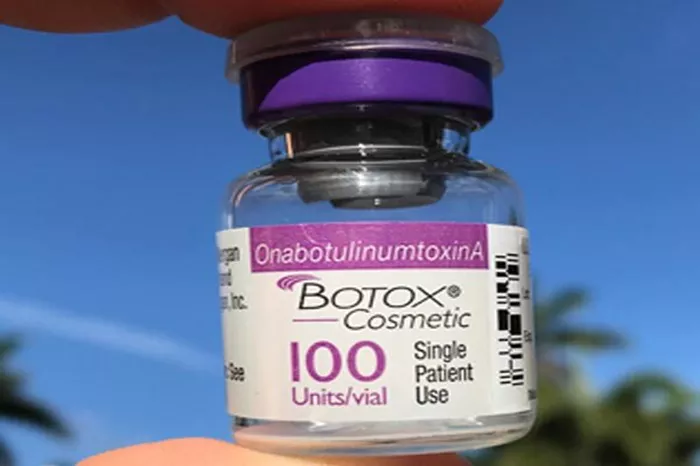Botox is one of the most popular cosmetic treatments worldwide, prized for its ability to reduce wrinkles and rejuvenate the skin without invasive surgery. With the increasing demand for smoother, younger-looking skin, many people are interested in knowing just how long a vial of Botox can last. Whether you’re considering Botox for the first time or are an experienced user, understanding the longevity of each vial is essential for managing costs, planning treatments, and maximizing the benefits of Botox.
This article will provide a detailed examination of how long a vial of Botox lasts, including factors affecting its duration, proper storage, average dosage needs, and practical tips to make the effects last longer.
What is Botox?
The Basics of Botox
Botox, short for botulinum toxin, is a neurotoxin derived from Clostridium botulinum. It temporarily blocks nerve signals in muscles, reducing contractions that cause wrinkles, particularly in the forehead, around the eyes, and between the eyebrows. Botox is administered in measured doses based on individual needs and the areas being treated.
The Purpose of Botox Treatments
The primary use of Botox is to reduce the appearance of fine lines and wrinkles, but it also has therapeutic uses for conditions such as chronic migraines, excessive sweating, and even muscle spasms. This versatility makes Botox a valuable tool in both cosmetic and medical fields, allowing patients to address a variety of concerns with a single treatment approach.
Understanding the Structure of a Botox Vial
Botox Vial Composition
Each vial of Botox contains a certain amount of botulinum toxin that is diluted with saline before use. The standard vial usually contains 50 or 100 units of Botox, although smaller vials may also be available. The concentration within each vial allows healthcare providers to administer precise dosages suited to the needs of each patient, adjusting based on the treatment area and individual anatomy.
Dosage and Unit Requirements by Treatment Area
To get a clearer picture of how long a vial can last, it’s important to understand the typical unit requirements for different treatment areas:
Forehead Lines: 10–30 units
Crow’s Feet (around the eyes): 5–15 units per eye
Glabellar Lines (between the eyebrows): 15–25 units
The average patient receives anywhere from 20 to 50 units in a single session, meaning that a 100-unit vial might provide one to five treatment sessions, depending on the dosage required.
How Long Does a Vial of Botox Last?
The duration of a single vial of Botox is not solely defined by how much you receive in a session; it also depends on a combination of factors such as the dilution method, the area treated, and individual body response.
Shelf Life of an Unopened Vial of Botox
An unopened vial of Botox has a relatively long shelf life, typically lasting for about two to three years when stored correctly. However, Botox needs to be kept at a cold temperature (around 2–8°C) to maintain its efficacy. High-quality clinics will ensure that Botox is stored under the right conditions to prevent loss of potency over time.
Expiry of a Diluted or Opened Vial
Once a vial is opened and diluted, its usable life drastically shortens, typically to 24 hours. Some practitioners use diluted Botox up to two weeks after opening, but this can lead to reduced effectiveness. Patients should always ensure their Botox is fresh to receive optimal results.
Duration of Results After Treatment
One of the most frequently asked questions is, “How long will my Botox results last?” While a vial of Botox may be used in several treatments, the longevity of each treatment can vary widely among individuals.
Typical Duration of Botox Results by Treatment Area
In general, the effects of Botox last for three to six months, though this can vary based on several factors:
Forehead: Typically lasts around three to four months
Crow’s Feet: Usually lasts between two and four months
Glabellar Lines: Often lasts around three to five months
Factors Influencing Botox Longevity
Metabolism: Individuals with faster metabolisms may break down Botox more quickly, reducing its overall duration.
Frequency of Treatment: Regular users may find that their results last longer over time as the muscles weaken and respond more effectively.
Area Treated: Larger muscles may require higher doses for the effects to last, while smaller muscles (e.g., around the eyes) may need smaller doses, which might fade more quickly.
Maximizing the Effect of Each Botox Vial
Proper Storage and Handling
To ensure each vial lasts as long as possible, proper storage and handling are essential. Clinics should store Botox vials at a cold temperature to prevent degradation. When handled correctly, Botox will retain its potency, allowing for effective treatments and consistent results.
Avoiding Common Pitfalls in Botox Usage
To maximize the longevity of Botox effects, there are a few key practices to consider:
Do Not Rub the Treated Area: This can prevent the toxin from spreading and reducing effectiveness.
Avoid Strenuous Activity Post-Treatment: High-intensity exercise immediately after treatment may interfere with the results.
Schedule Regular Maintenance Treatments: Receiving Botox before the effects completely wear off can help sustain the results, ultimately prolonging the vial’s usage.
Conclusion
Botox remains a powerful option for achieving youthful, smooth skin with relatively low maintenance and effective results. The duration of a Botox vial can vary depending on individual needs, area treated, and how the Botox is stored and handled. On average, results last three to six months, with factors like metabolism, muscle size, and injection frequency impacting the longevity.
With proper care, a single vial of Botox can be efficiently used across multiple treatments, making it a cost-effective choice for many patients. When seeking Botox treatments, always consult a reputable provider to ensure the highest quality and longest-lasting results.
Related topic:
Are Crow’s Feet Still There After Botox?
What Is Natural Botox? [Revealed]


